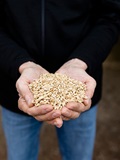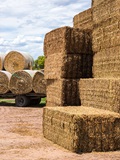South East SA
20 May 2020
| Date | SE 23 | SE 22 | SE 5YA |
|---|---|---|---|
| 06-Jan-23 | 358 | 210 | 226 |
| 13-Jan-23 | 363 | 210 | 231 |
| 20-Jan-23 | 363 | 210 | 226 |
| 27-Jan-23 | 363 | 210 | 231 |
| 03-Feb-23 | 363 | 210 | 230 |
| 10-Feb-23 | 363 | 210 | 228 |
| 17-Feb-23 | 363 | 210 | 228 |
| 24-Feb-23 | 363 | 210 | 228 |
| 03-Mar-23 | 363 | 210 | 228 |
| 10-Mar-23 | 363 | 210 | 227 |
| 17-Mar-23 | 363 | 215 | 229 |
| 24-Mar-23 | 363 | 215 | 229 |
| 31-Mar-23 | 363 | 215 | 232 |
| 07-Apr-23 | 363 | 215 | 232 |
| 14-Apr-23 | 363 | 218 | 233 |
| 21-Apr-23 | 363 | 220 | 232 |
| 28-Apr-23 | 363 | 220 | 237 |
| 05-May-23 | 363 | 220 | 237 |
| 12-May-23 | 363 | 220 | 237 |
| 19-May-23 | 363 | 220 | 237 |
| 26-May-23 | 363 | 220 | 237 |
| 02-Jun-23 | 363 | 220 | 237 |
| 09-Jun-23 | 353 | 230 | 260 |
| 16-Jun-23 | 351 | 240 | 282 |
| 23-Jun-23 | 348 | 240 | 279 |
| 30-Jun-23 | 343 | 240 | 279 |
| 07-Jul-23 | 338 | 240 | 271 |
| 14-Jul-23 | 331 | 243 | 272 |
| 21-Jul-23 | 323 | 245 | 272 |
| 28-Jul-23 | 313 | 245 | 272 |
| 04-Aug-23 | 313 | 245 | 272 |
| 11-Aug-23 | 313 | 245 | 273 |
| 18-Aug-23 | 311 | 253 | 296 |
| 25-Aug-23 | 308 | 260 | 297 |
| 01-Sep-23 | 308 | 260 | 297 |
| 08-Sep-23 | 260 | 297 | |
| 15-Sep-23 | 260 | 297 | |
| 22-Sep-23 | 258 | 295 | |
| 29-Sep-23 | 255 | 292 | |
| 06-Oct-23 | 255 | 292 | |
| 13-Oct-23 | 255 | 258 | |
| 20-Oct-23 | 260 | 258 | |
| 27-Oct-23 | 260 | 257 | |
| 03-Nov-23 | 293 | 264 | |
| 10-Nov-23 | 325 | 270 | |
| 17-Nov-23 | 325 | 265 | |
| 24-Nov-23 | 338 | 269 | |
| 01-Dec-23 | 338 | 271 | |
| 08-Dec-23 | 338 | 264 | |
| 15-Dec-23 | 343 | 265 | |
| 22-Dec-23 | 343 | 265 | |
| 29-Dec-23 | 353 | 271 |
Notes:
Change in price is the change since the last report. Hay quoted is sourced and delivered locally, GST exclusive unless stated otherwise. It should be noted that local prices quoted may not be the cheapest available, sourcing it from another region may be more affordable, and buyers are encouraged to evaluate all options. Prices are indicative to a mid-range shedded product, and based on the best indication of market value at the time of reporting. It should be noted there is a wide variation in quality of hay, prices for a mid-range product will not reflect the weighted average of trade. Prices will naturally vary based on the product quantity and quality, buyer/seller relationship and the size of the trade.The hay report has been commissioned by Dairy Australia to provide an independent and timely assessment of hay markets in each dairy region. This report is created using data provided by the Australian Fodder Industry Association (AFIA). It should be remembered that actual prices may vary for quality or other reasons. Whilst all reasonable steps have been taken to ensure the accuracy of the information contained in this report, Dairy Australia disclaims all liability to the fullest extent permitted by Australian law for any inadvertent errors and for any losses or damages stemming from reliance upon its content. Dairy Australia recommends all persons seek independent advice and, where appropriate, advice from a qualified advisor before making any decisions about changes to business strategy.
Commentary
- Reasonable rainfall has been measured across most parts of the region during the past week. However, the region remains behind average recorded rainfall for Autumn.
- Recent rainfall has improved confidence in the season. Crop and fodder growers are now in the middle of sowing. Those who undertook early sowing are almost finished, others who waited for the break have some weeks to go. Sowing is expected to be finished by end of June.
- Across the region more grain has been planted due to the expectation it will be more profitable than hay. Some movement towards grazing cereal varieties confirmed as growers try to increase options, spread risk and reduce need for additional inputs during the growing season.
- Big shortfall of hay is expected this year, supply availability will become clearer in Spring. Growers with contracts in place will maintain hay production program. However, as sowing has progressed it is clear farmers have planted additional pasture rather than invest in cereal hay due to input costs.
- Hay and fodder sales have remained steady with increased enquiries from sheep producers as they are look for feed to maintain stock levels. Steady sales in the southern part of the region due to croppers concentrating on sowing and not actively trading fodder.
- Supplies of hay are very low across the region; no advertising has been required to support sales. A lot of the remaining hay is already contracted for sale so reports of shortages expected to increase.
- No change to pricing this week
- Cereal hay: +/- 0 ($200 to $240/t). Prices remain steady.
- Lucerne hay: +/-0 ($330 to $350/t). Prices remain steady depending on quality.
- Straw: +/-0 ($100 to $120/t). Prices remain steady.
- Pasture hay: +/-0 ($180 to $220/t). Prices remain steady.
- Please note: Unless stated otherwise, prices are per tonne, sourced and delivered locally. The price range indicated is for feeds of varying quality with the price range generally indicative of quality of feed. We recommend feed testing and viewing of fodder before purchase to be sure of the quality of feed.

